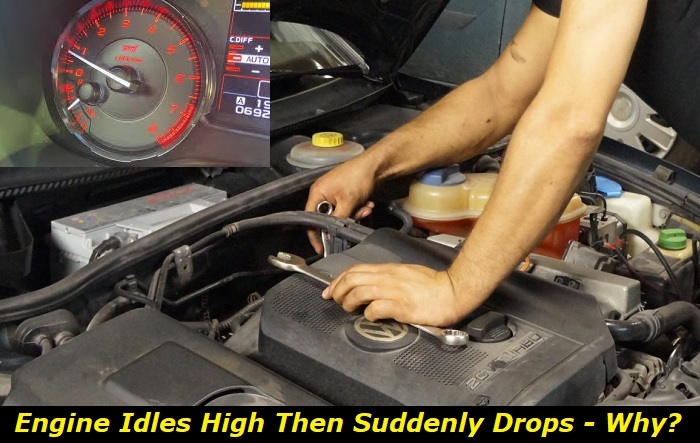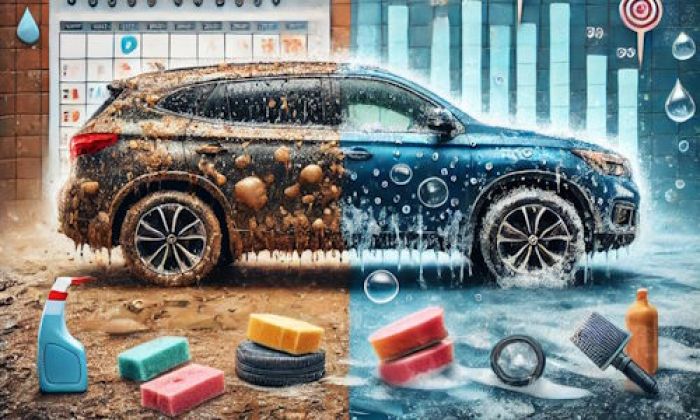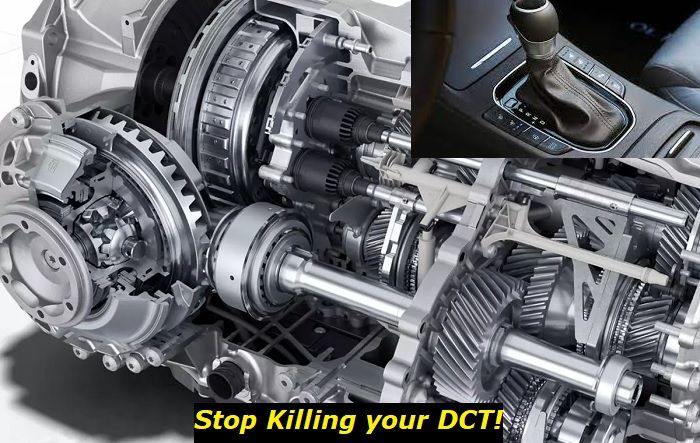As die-hard gearheads, we want our car engines to run healthy at all times. But, let's face it, we don't live in a perfect world. It can be frustrating when your vehicle has idling issues, especially when it idles high and suddenly drops.
Electrical problems leading to RPM anomalies highlights
- DIY repairs:possible but complicated
- Tools needed:inspection and repair tools
- Commonreasons:idle control valve, throttle position sensor, wiring, software
- Time to repair:1 - 2.5 hours
- Price for parts:$50 - $300
- Can you drive?Yes
- Alternative solutions:unplugging sensors, resetting or relearning sensors

Common Symptoms of A Rising And Dropping Idle
9/10 times when you hear the car idling high and suddenly dropping, your mind will immediately run to a catastrophic engine failure. However, this is not the case on most occasions.
To ensure that we are on the same page, here are some common symptoms of the issue we discuss in this article.
They are:
- The RPMs fluctuate without an obvious reason
- The car has trouble when accelerating
- You feel a sudden jolt when the RPMs return to normal
- Frequent engine stalls when coming to a stop
- The engine jolts or bounces when driving
Most modern cars with internal combustion engines idle between 600 -1000 RPM. If yours idles higher or lower than that, it might be worth taking a look at the internals and going through the rest of this article.
However, before trying to fix the issues, it is important that you take action to minimize the damages from a rising and falling idle if it appears suddenly while you are driving down the road.
What to do if the engine idle suddenly starts rising and dropping?
RPM drops most commonly occur when the vehicle is sitting idle either in your driveway, at a red light, or in a traffic jam. If your engine starts acting up suddenly, here's what you should do.
- Pull out of traffic, and come to a stop in a safe location.
- Turn off the engine. If the vehicle has an automatic transmission, set it to Park. If you drive a manual, shift into Neutral.
- Apply the parking brake.
- Start the engine and listen to the exhaust note. If you hear pops and bangs, there is an issue with engine performance.
- If there aren't any audible exhaust pops, have a look at the engine mounts. Worn engine mounts can sometimes lead to engine vibrations and idling issues.
Frankly, following these final two steps will give you a rough idea about the source of the idling issue. With that out of the way, here are some of the most common causes of a rising and suddenly falling engine idle. Who knows, one of our below guesses might just be the exact cause for your idling troubles!
- Vacuum Leaks
- Clogged Air Filter
- Faulty Spark Plugs
- Low Engine Compression
- Bad Fuel Injectors
- Problems With The Carburetor
- PCV Valve Issues
1) Vacuum Leaks
Most modern vehicles come with a vacuum system which is critical for the operation of the internal combustion engine. Carburated vehicles utilize the vacuum system to pump fuel into the engine, while some vehicles depend on the vacuum to deliver the air required for combustion.
Vacuum hoses are mostly made out of rubber, which wears out and breaks over time. The resulting vacuum leaks cause surplus air to enter the combustion chamber, making the engine misfire.
Inspecting these rubber lines regularly and replacing any broken ones is the best way to avoid vacuum-related idling issues.
2) Clogged Air Filter
Similar to human beings, engines require adequate airflow to function as intended. This is where the air filter comes in. As the name suggests, it filters external contaminants from entering the engine through the air intake.
However, just like other engine components, the air filter wears out over time. The constant barrage of dirt and debris takes a toll, clogging, and preventing the filter from doing its job. This cuts off the air supply to the engine, interrupting the combustion process.
When the engine isn't receiving an adequate air supply, the fuel inside the combustion chamber doesn't fully burn. This causes a whole host of issues, including the formation of soot deposits, spark plug damage, and rough idling.
3) Faulty Spark Plugs
When talking about the inner workings of an internal combustion engine, we can't gloss over the importance of spark plugs. These provide the "spark" which lights up the air-fuel mixture inside the cylinders.
If the spark plugs have gone bad, they will be unable to ignite the aforementioned mixture. The resulting inconsistent burn of the air-fuel mixture causes the engine RPMs to rise and fall erratically.
You can easily identify bad spark plugs through a visual inspection. If the spark plug is dark and has a burning smell, engine oil has made its way into the combustion chamber. On the other hand, if the spark plugs are white in color, there is a high chance of a cooling system issue.
4) Low Engine Compression
Bad compression is another common cause of a rising and falling idle. This is an issue that mostly plagues older vehicles that have done over 100,000 miles. But, that is not to say that modern engines are perfectly safe from bad compression either.
On top of causing idling issues, low engine compression leads to other inconveniences such as misfires, engine stalls, poor performance, and problems upon engine startup.
5) Bad Fuel Injectors
Similar to all the other systems we discussed so far, the fuel injectors are also essential for the engine to maintain a constant idle. The fuel injectors inject fuel directly into the combustion chamber and make a continuous ticking noise when they are functioning properly.
Fuel injectors tend to go bad and get dirty once they surpass the 50,000-mile mark. This happens mainly due to carbon buildup. If you are suffering from idling issues, we believe cleaning out the fuel injectors is a good starting point.
6) Problems With The Carburetor
This goes out to all the classic car lovers. On these older engines, the carburetor was responsible for mixing the air and fuel in the correct ratio. Electronic fuel injection has replaced this function in modern vehicles.
So, if you drive a vehicle with a carburated engine, inspect all of its elements to ensure they are in proper working order. Pay special attention to the carburetor's booster pump, as it is a common point of failure that leads to a rising and falling idle.
7) PCV Valve Issues
The Positive Crankcase Ventilation (PCV) valve is responsible for controlling harmful emissions from the engine. Not only that, but this component protects the engine against oil leaks, blown head gaskets, and bad-quality oil.
Over time, the PCV valve may wear out, and it can get stuck open. Excessive amounts of air will escape into the engine through the damaged valve, creating oil leaks, weird noises, and rough idling.
A healthy PCV valve is essential for an engine to function properly. So, make sure to inspect and take care of this component during your service routine.
So, the next time your engine's idle starts rising and falling erratically, make sure to pay attention to all these factors. But, there may be some other causes behind your specific case, so it is best to take your vehicle to a certified mechanic as soon as possible,
Car Idles High Then Drops - Precautionary Measures
If you want to prevent idling issues with your vehicle in the future, here are some precautionary measures you can follow.
- Replace The Spark Plugs:To ensure that bad spark plugs don't cause your idle to rise and then drop, make sure to replace them at scheduled intervals. Though the exact service life varies between different types of plugs, we recommend changing them every 60,000 - 150,000 miles.
- Swap Out The Air Filter:Under ideal situations, you should replace the air filter every 12,000 to 15,000 miles. Keep in mind thatdrivers who drive their vehicles on dusty roads may have to replace their air filters more often than those who only drive on highways.
- Run an Engine Scan:If you are unable to pinpoint the exact cause of the rising and falling idle, we recommend running an engine scan using an OBD scanner. You can use the OBD error codes to identify the culprit which is giving your engine a hard time.
Final Thoughts
Driving a vehicle that is struggling to maintain a constant idle can be a horrible experience, not to mention the frequent jolts and stalls that follow. However, you can significantly reduce the risk of idling issues simply with some regular maintenance. Make sure to utilize what you learned here today to avoid going through the hassle of a rising and falling idle.
And, if you aren't sure what to do, don't hesitate to pay a visit to the nearest mechanic!
About the authors
The CarAraC research team is composed of seasoned auto mechanics and automotive industry professionals, including individuals with advanced degrees and certifications in their field. Our team members boast prestigious credentials, reflecting their extensive knowledge and skills. These qualifications include: IMI: Institute of the Motor Industry, ASE-Certified Master Automobile Technicians; Coventry University, Graduate of MA in Automotive Journalism; Politecnico di Torino, Italy, MS Automotive Engineering; Ss. Cyril and Methodius University in Skopje, Mechanical University in Skopje; TOC Automotive College; DHA Suffa University, Department of Mechanical Engineering






Add comment